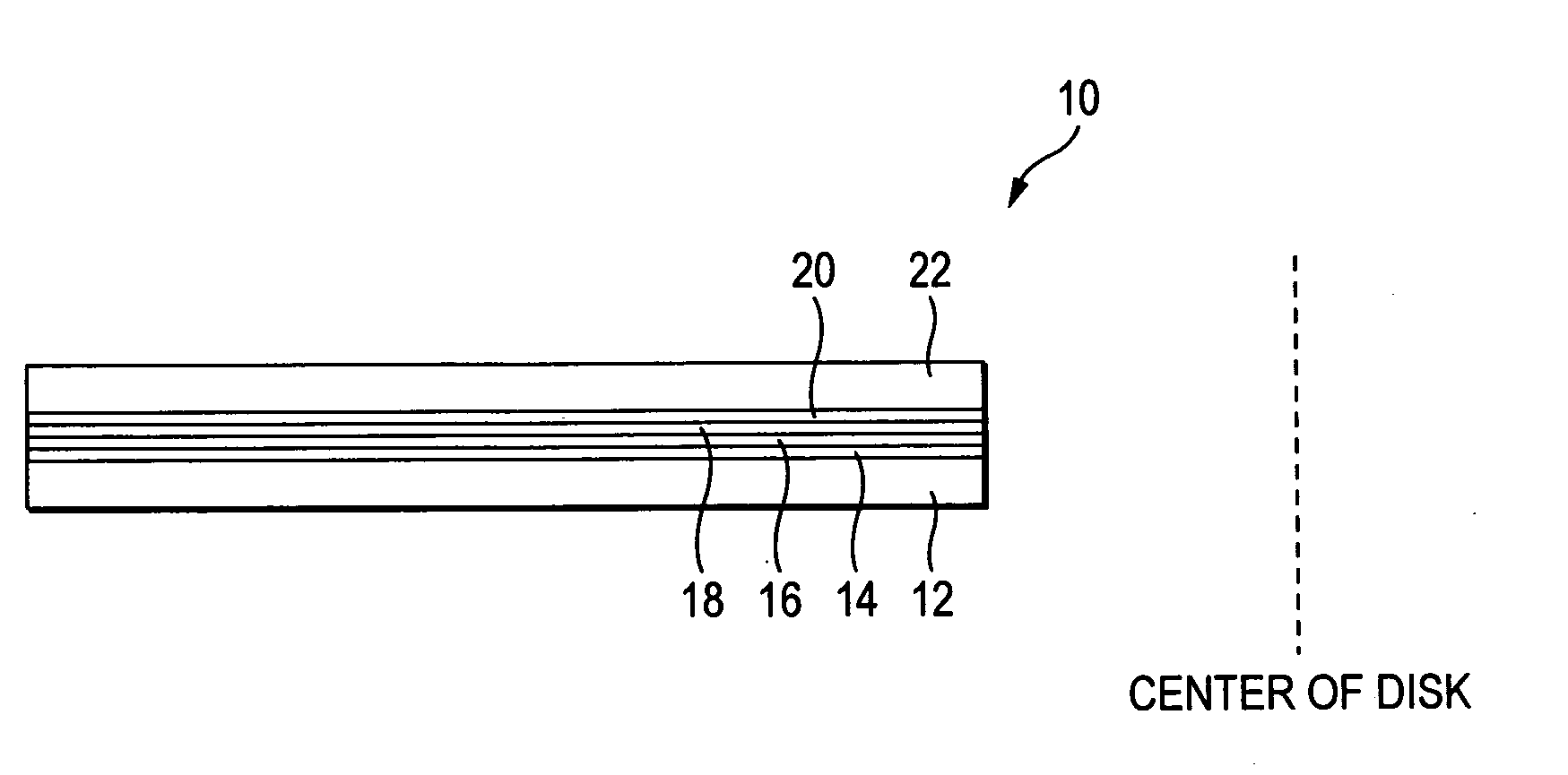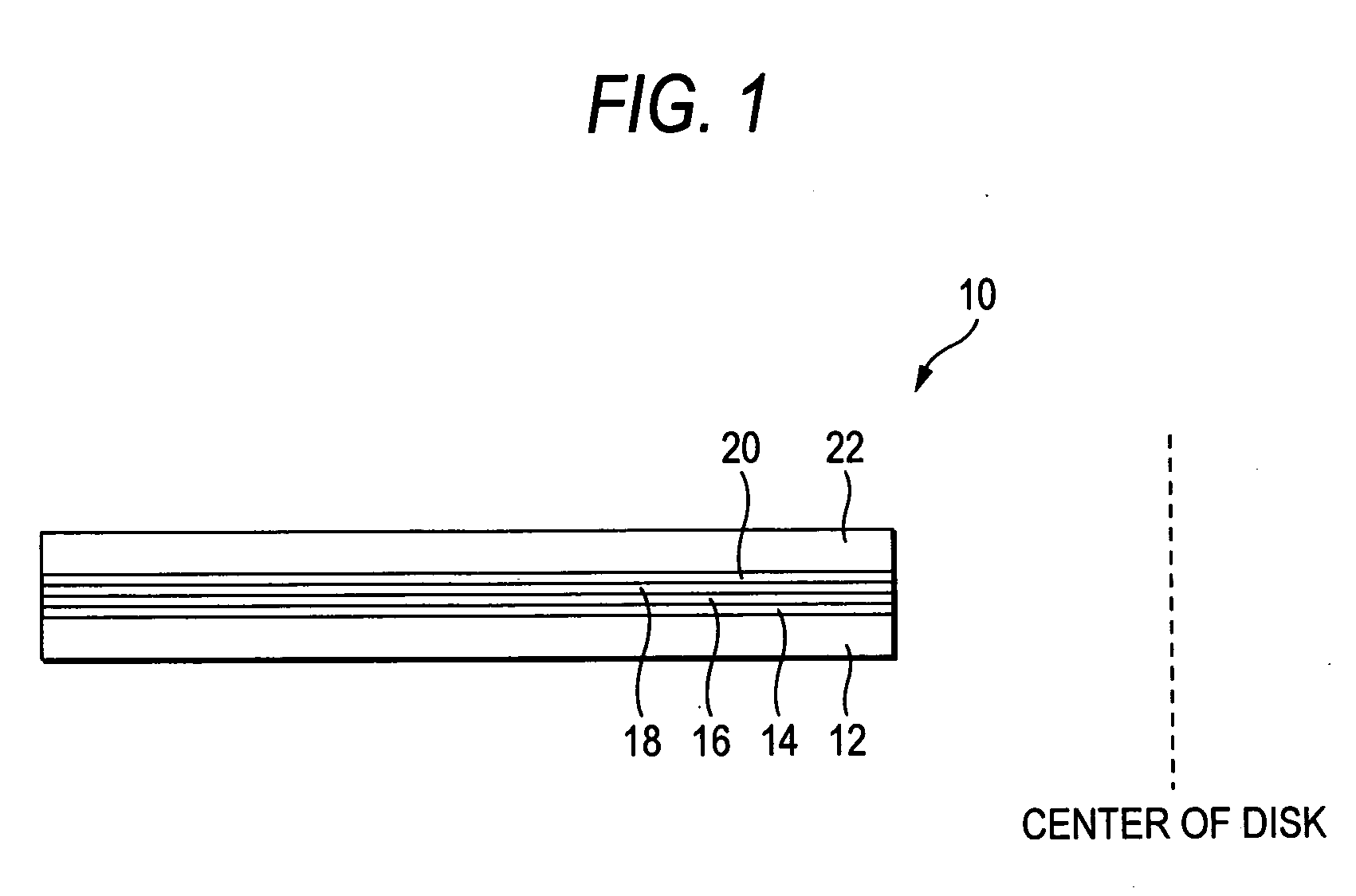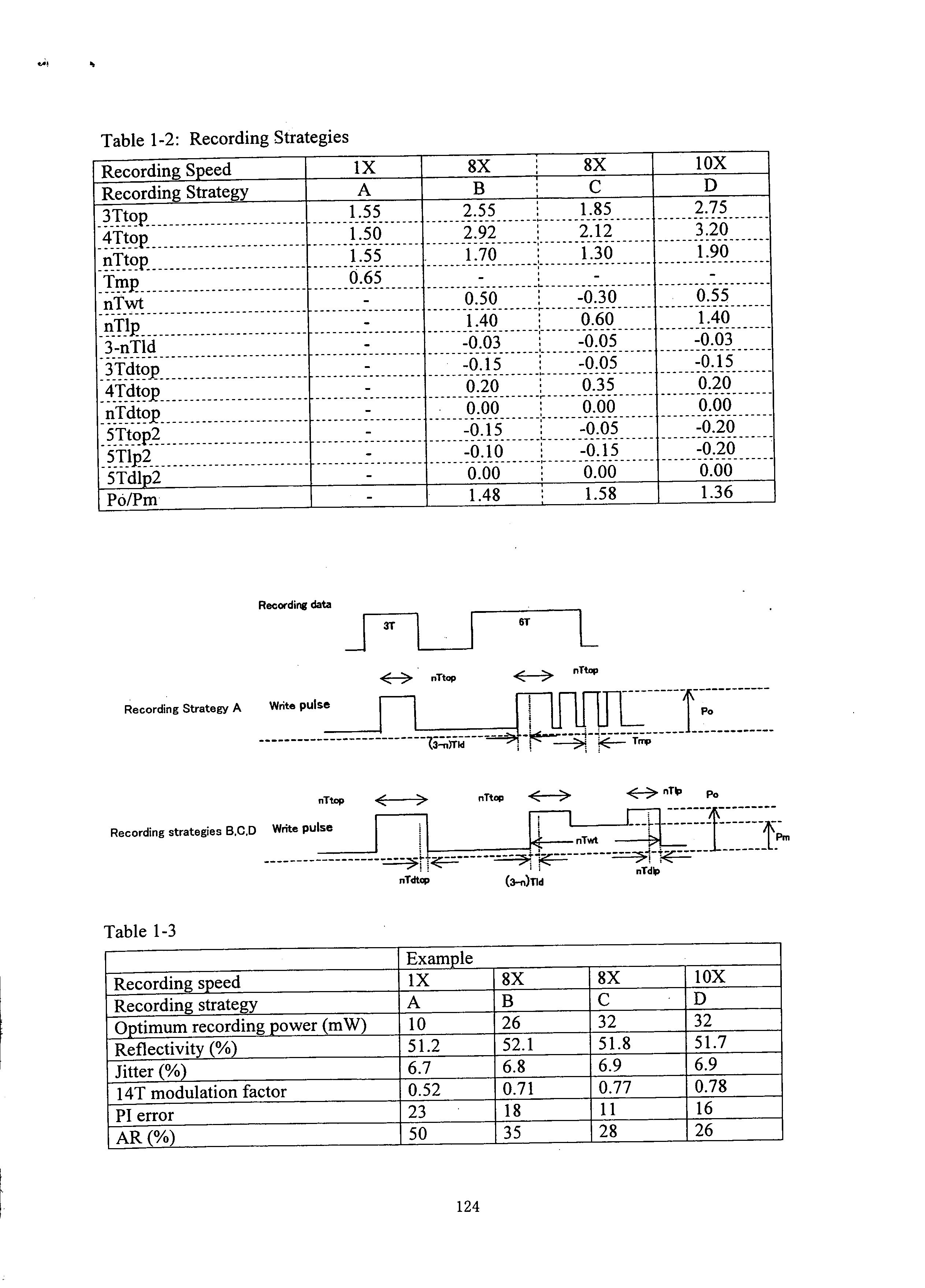Novel Oxonol Dye Compounds and Optical Information Recording Medium
a technology of optical information and dye compounds, applied in thermography, instruments, photosensitive materials, etc., can solve the problems of unsatisfactory effects, large increase in reflectance, and degradation of the smoothness of the coating surface, and achieve good recording characteristics, high sensitivity, and solubility of dyes at the time of preparation
- Summary
- Abstract
- Description
- Claims
- Application Information
AI Technical Summary
Benefits of technology
Problems solved by technology
Method used
Image
Examples
example 1
[0330] A substrate having a spiral groove (depth: 120 nm, width: 350 nm, track pitch: 0.74 μm), a thickness of 0.6 mm, and a diameter of 120 mm was formed by injection molding with a polycarbonate resin. A coating solution was prepared by dissolving 0.95 g of dye A shown below and 0.05 g of dye B shown below in 100 ml of 2,2,3,3-tetrafluoropropanol, and the obtained coating solution was coated by spin coating on the surface of the side on which the groove was formed of the above substrate, whereby a recording layer was formed.
[0331] After that, silver was sputtered on the dye-coated surface to form a reflective layer having a thickness of about 120 nm, and then the substrate was stuck to a dummy substrate having the same shape as the above substrate with a UV-curable resin as an adhesive to thereby prepare a DVD-R disc (an optical recording medium).
example 1-1
Evaluation of Spin Coating Suitability
[0339] Dyes (in the total amount of 0.2 g) mixed in a ratio shown in Table 1 were dissolved in 10 ml of 2,2,3,3-tetrafluoropropanol, spin-coated on a polycarbonate substrate, and then examined for the presence or absence of coating streaks by visual observation.
example 1-2
Test of Solution Ageing Stability
[0340] A 1.0 mass % 2,2,3,3-tetrafluoropropanol solution of the combination of dyes shown in Table 1 was prepared, and allowed to stand for one week at 20° C. The resulting solution was inspected for precipitation of crystals by visual observation.
[0341] The results obtained are shown in Table 1-1.
[0342] The state of precipitation of crystals was rated on a A-to-D scale (A being the best), and the criterion adopted herein is as follows.
[0343] A: No precipitation of crystals is observed at all.
[0344] B: No precipitation of crystals is virtually observed.
[0345] C: Precipitation of crystals is slightly observed.
[0346] D: Considerable precipitation of crystals is observed.
TABLE 1-1DyeexhibitingDyes exhibitingabsorptionExtent ofabsorption maximamaximum incoatingin range ofrange ofstreaks500-600 nm600-720 nm(by visualSolution(percentage by mass)(percentageobserva-ageingLevel No.Dye-1Dye-2by mass)tion)stability101I-7 (50%)I-14II-3 (5%)notA(Inventio...
PUM
| Property | Measurement | Unit |
|---|---|---|
| temperature | aaaaa | aaaaa |
| wavelength range | aaaaa | aaaaa |
| wavelength range | aaaaa | aaaaa |
Abstract
Description
Claims
Application Information
 Login to View More
Login to View More - R&D
- Intellectual Property
- Life Sciences
- Materials
- Tech Scout
- Unparalleled Data Quality
- Higher Quality Content
- 60% Fewer Hallucinations
Browse by: Latest US Patents, China's latest patents, Technical Efficacy Thesaurus, Application Domain, Technology Topic, Popular Technical Reports.
© 2025 PatSnap. All rights reserved.Legal|Privacy policy|Modern Slavery Act Transparency Statement|Sitemap|About US| Contact US: help@patsnap.com



